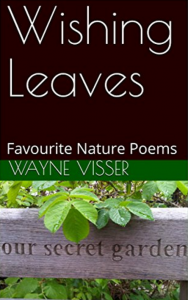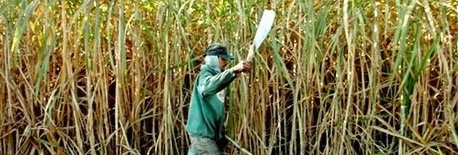A swath of green chemistry initiatives could revolutionise the industry but just taking the toxic stuff out isn’t the answer, ingredients and design need to change.
The ‘green’ label has been so abused over the past few decades that it is wise to suspect PR spin (what many call greenwashing). In the case of green chemicals, however, there is at least some serious thinking and extensive application to back up its claims.
Let’s start with what it means. The OECD defines green chemistry as “the design, manufacture and use of efficient, effective, safe and more environmentally benign chemical products and processes”. More specifically, green chemistry should use fewer hazardous and harmful feedstocks and reagents; improve the energy and material efficiency of chemical processes; use renewable feedstocks or wastes in preference to fossil fuels or mined resources; and design chemical products for better reuse or recycling.
Popular categories of green chemistry include biochemical fuel cells, biodegradable packaging, aqueous solvents, white biotechnology (the application of biotechnology for industrial purposes), totally chlorine-free bleaching technologies and green plastics.
One research report suggests that the green chemistry market will grow from $2.8bn in 2011 to $98.5bn by 2020 and will save the industry $65.5bn through direct cost savings and avoided liability for environmental and social impacts.
Others are even more bullish, predicting growth in the bio-based chemicals market from $78bn in 2012 to $198bn by 2017, eventually accounting for 50% of the chemicals market by 2050.
Can we trust green chemistry?
One way to check is the US Environmental Protection Agency’s Design for the Environment (DfE) Safer Product Labeling Program. The Safer Chemical Ingredients List contains chemicals that have been screened to exclude CMRs (carcinogens, reproductive/developmental toxicants and mutagens) and PBTs (persistent, bio-accumulative, and toxic compounds) and other chemicals of concern.
At present, about 2,500 products carry the DfE Safer Product Label, with compliance verified by certifiers such as NSF Sustainability.
Beyond this, there are a host of multi-stakeholder initiatives that give further guidance, checks and validity to claims, including Clean Production Action’s GreenScreen, GreenBlue’s CleanGredients and iSustain’s Alliance Assessment.
All these hazardous chemical screening lists may seem like striving for ‘less bad’ rather than ‘good’, but they are also sparking innovations around the world.
Imagine what would happen if we substituted all our fossil fuel derived plastics with Brazilian company Braskem’s sugarcane ethanol derived Bio-PE (polyethylene) and Bio-PP (polypropylene), which removes up to 2.15 metric tons of CO2 for each ton produced.
What if many of the plastics used in the automotive sector were replaced by a new latex-free material produced through a dry powder coating technology by French project Latexfri? Or perhaps we could move to starches created by Ethiopian company YASCAI from enset, a local plant?
Another approach, which UNIDO has been promoting, is to move towards chemical leasing, where chemical manufacturers take responsibility for the safe recovery and disposal of the chemicals they sell. For example, in Colombia, a chemical leasing programme between Ecopetrol and Nalco de Colombia resulted in a reduction of the costs of the treatment process by almost 20%, with savings of $1.8m for Ecopetrol and $463,000 for Nalco.
In Sri Lanka, chemical leasing between Wijeya Newspapers and General Ink resulted in ink savings of around 15,000kg, equivalent to approximately $50,000 per year. In Egypt, Delta Electrical Appliances, Akzo Nobel Powder Coating and Chemetall Italy reduced consumption of chemicals for pre-treatment chemicals by 15-20% and for powder coating by 50% as a result of chemical leasing.
A new era for the chemical industry
Will all of these green chemistry initiatives revolutionise the industry?
Cradle to Cradle, a product certification scheme, hopes to do just that. Co-founder and German chemist, Michael Braungart, told me that in 1987 when he was analysing complex household products, he identified 4,360 different chemicals in a TV set and concluded: “It doesn’t help just to take any toxic stuff out of it”. Rather, products have to be redesigned so that all inputs are either biological nutrients (that can harmlessly biodegrade) or technical nutrients (that can be endlessly and safely recycled).
So does Cradle to Cradle represent the cutting edge of green chemistry? In my book, The Top 50 Sustainability Books, Braungart says: “I’m just talking about good chemistry. Chemistry is not good when the chemicals accumulate in the biosphere; that’s just stupid. Young scientists immediately understand that a chemical is not good when it accumulates in mother’s breast milk. It’s just primitive chemistry. So now we can make far better chemistry, far better material science, far better physics.”
[button size=”small” color=”blue” new_window=”false” link=”http://www.waynevisser.com/wp-content/uploads/2014/10/article_sustech6_wvisser.pdf”]Pdf[/button] Will green chemistry save us from toxification? (article)
[button size=”small” color=”blue” new_window=”false” link=”http://www.waynevisser.com/books/the-quest-for-sustainable-business”]Link[/button] The Quest for Sustainable Business (book)
[button size=”small” color=”blue” new_window=”false” link=”http://www.kaleidoscopefutures.com”]Link[/button] Kaleidoscope Futures (website)
[button size=”small” color=”blue” new_window=”false” link=”http://www.csrinternational.org”]Link[/button] CSR International (website)
Visser, W. (2014) Will green chemistry save us from toxification? The Guardian, 24 September 2014.
 This creative collection, now in its 3rd edition, brings together nature poems by Wayne Visser, celebrating the diversity, beauty and ever-changing moods of our planet. The anthology includes many old favourites like “I Think I Was a Tree Once” and “A Bug’s Life”, as well as brand new poems like “Monet’s Dream” and “The Environmentalist”. Then as we turned our faces to the moon / Our hands entwined, our hearts in sync, in tune / We felt the fingers of the silken breeze / And made our wishes on the falling leaves / A gust of wind set off a whispered sigh / Among the trees that leaned against the sky. Buy the paper book / Buy the e-book.
This creative collection, now in its 3rd edition, brings together nature poems by Wayne Visser, celebrating the diversity, beauty and ever-changing moods of our planet. The anthology includes many old favourites like “I Think I Was a Tree Once” and “A Bug’s Life”, as well as brand new poems like “Monet’s Dream” and “The Environmentalist”. Then as we turned our faces to the moon / Our hands entwined, our hearts in sync, in tune / We felt the fingers of the silken breeze / And made our wishes on the falling leaves / A gust of wind set off a whispered sigh / Among the trees that leaned against the sky. Buy the paper book / Buy the e-book.

